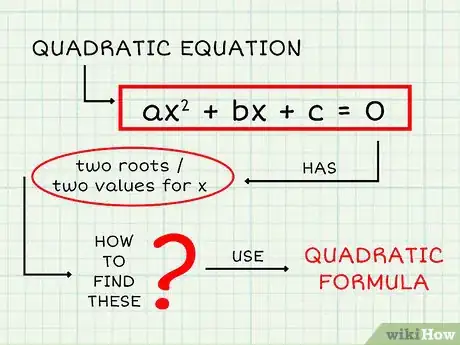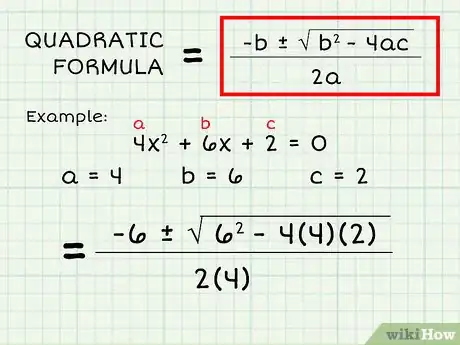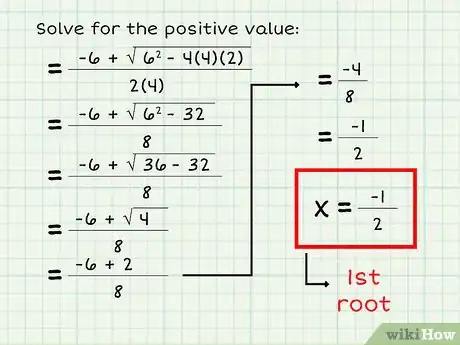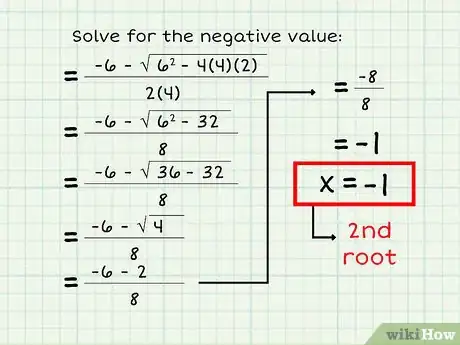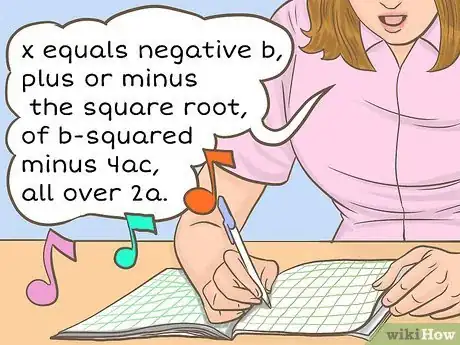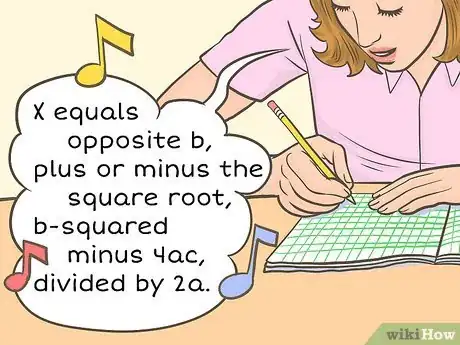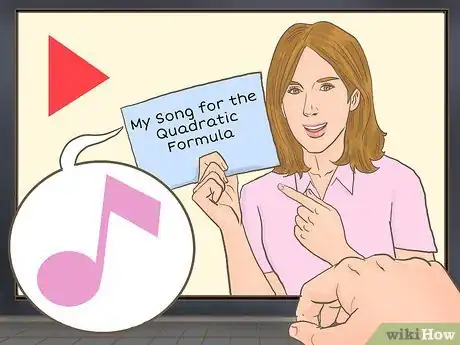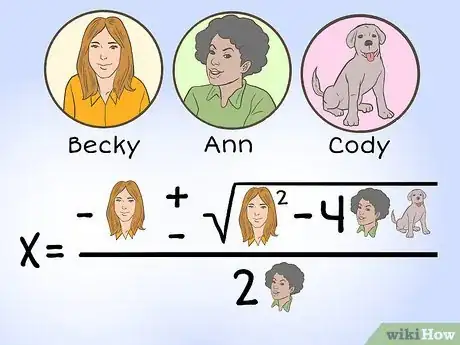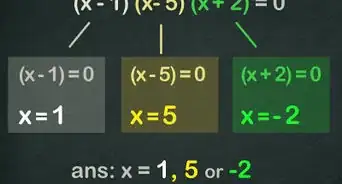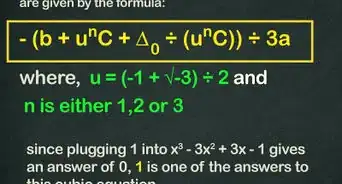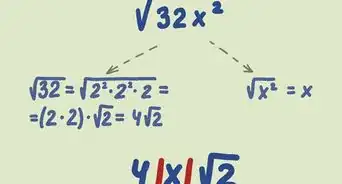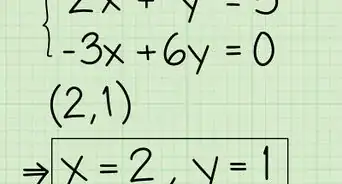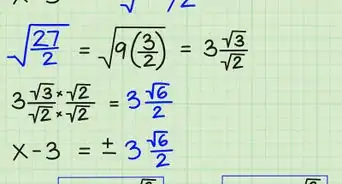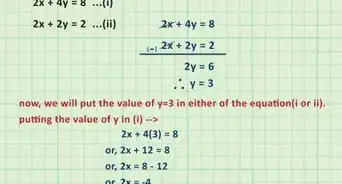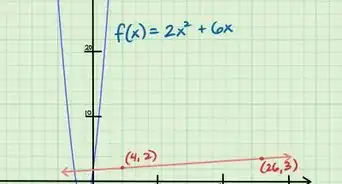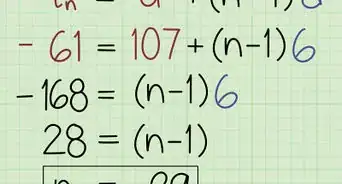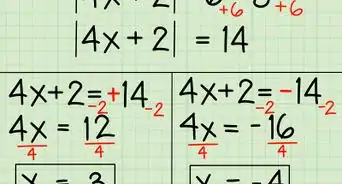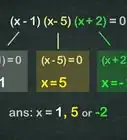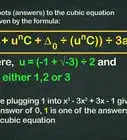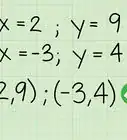This article was co-authored by Grace Imson, MA. Grace Imson is a math teacher with over 40 years of teaching experience. Grace is currently a math instructor at the City College of San Francisco and was previously in the Math Department at Saint Louis University. She has taught math at the elementary, middle, high school, and college levels. She has an MA in Education, specializing in Administration and Supervision from Saint Louis University.
There are 8 references cited in this article, which can be found at the bottom of the page.
This article has been viewed 67,219 times.
The quadratic formula is a long, cumbersome formula, but it is helpful to memorize it, as it is a tool for solving quadratic equations. The best way to memorize the formula is by creating a mnemonic for it. A mnemonic is a device used to aid memorization. They work by helping your brain make associations between words, images, or melodies that are easy to remember, and information that is harder to memorize. [1] You've probably already used mnemonics to memorize the colors of the rainbow (ROY G. BIV) or to remember the order of operations (Please Excuse My Dear Aunt Sally). If you find that mnemonics help you, you can extend them to help you remember the quadratic formula.
Steps
Understanding the Formula
-
1Know what the formula is used for. The formula is used to find the value of in a quadratic equation. A quadratic equation takes the form of .[2] Remember that a quadratic equation will have two roots (two values for ). Using the quadratic formula will provide you with these roots.
- Understanding the purpose of a complicated math formula makes it much easier to remember.[3]
-
2Write down the formula. The formula is , where the variables , , and are derived from the coefficients in the quadratic equation . Plug the values of these variables into the formula.[4]
- For example, in the equation :
- Plugging these values into the equation:
Advertisement - For example, in the equation :
-
3Solve for the positive value. This means solving the equation . This will give you the first root of the equation.[5]
- For example:
So, the first root of the equation is
- For example:
-
4Solve for the negative value. This means solving the equation . This will give you the first root of the equation.[6]
- For example:
So, the first root of the equation is
- For example:
Using Music Mnemonics
-
1Sing to the tune of “Pop Goes the Weasel.” If you don't remember this song, it is the one that begins “Ring around the mulberry bush….” This is a common song and lyric used to remember the quadratic formula, and it is quick and easy to memorize.[7]
- The lyrics are:
x equals negative b,
plus or minus the square root,
of b-squared minus 4ac,
all over 2a.
- The lyrics are:
-
2Sing to the tune of “Row, Row, Row Your Boat.” Most people know this song and already have the tune memorized. It is a catchy song that can easily get stuck in your head, which makes it ideal for helping to memorize the formula.[8]
- The lyrics are:
X equals opposite b,
plus or minus the square root,
b-squared minus 4ac,
divided by 2a.
- The lyrics are:
-
3Make up your own song. This method can be especially effective if you pick a tune that is meaningful to you and create your own lyrics for it. You can make the song as silly or catchy as you want, but make sure to not make it too complicated, or it will be difficult to remember.
- Write down the lyrics of the song so that you remember it. Even better, make a video of yourself singing it. Then you can listen to the video during your study sessions and sing along with it. You could also post it to YouTube or another website so that it can help others who are also trying to remember the formula.
Using Word and Image Mnemonics
-
1Create an expression mnemonic associating familiar names and numbers. Use names of famous people, or people you know, that begin with the letter of the variable.
- For example, if your sister's name is Becky, your friend's name is Ann, and your dog's name is Cody, you can memorize “Negative Becky, plus or minus the square root of Becky squared minus 4 Ann-Cody, over 2 Anns.”
-
2Invent a story. Associate all of the symbols, numbers, and variables with images and actions that help you remember the formula. Inventing a unique, silly story can help memorize quickly. This method is good for visual learners, as it will help you make a visual representation of the formula.[9]
- For example, you can associate a negative/minus sign with being sad, and a positive/plus sign with being happy. You can associate a radical sign with an umbrella, and a fraction with a subway. The variables can stand for the first letter in the name of a person or animal.
- For example, for the quadratic formula you could make up the following story: “A sad bison approached an umbrella that could have been happy or sad. Underneath the umbrella was a square bison and four sad alley cats. They all stood over a subway where 2 aardvarks were dancing.”
- Write down your story so that you can re-read it as you try to memorize the formula.
-
3Create name mnemonics. Come up with silly sounding names or phrases that can help you remember each part of the formula. It is extra helpful to visualize what that person or thing might look like. Coming up with your own names and images can help the mnemonic stick by making it meaningful for you.
- For example, to remember the first part of the formula, , you could use the name “Negbee, Prime Minister” and visualize what such a leader might look like. To remember , you could say the phrase “Square Root Beer Square” and visualize a square made out of Root Beer wearing glasses.
Community Q&A
-
QuestionWho invented the quadratic formula?
 DonaganTop AnswererThe formula was first published in the year 628 AD by Indian mathematician Brahmagupta.
DonaganTop AnswererThe formula was first published in the year 628 AD by Indian mathematician Brahmagupta. -
QuestionIs it seriously easier to remember aardvarks under a bridge with cats and an emotionally unstable umbrella than it is to remember a formula? If not, why the weird mnemonic?
 Iris8989Community AnswerSome people remember and learn things differently. Yes, for some people memorizing words about aardvarks under a bridge with cats is way harder than the formula itself. But some people memorize things better by making it fun or like a tune to their favorite song.
Iris8989Community AnswerSome people remember and learn things differently. Yes, for some people memorizing words about aardvarks under a bridge with cats is way harder than the formula itself. But some people memorize things better by making it fun or like a tune to their favorite song.
References
- ↑ http://psychcentral.com/lib/memory-and-mnemonic-devices/
- ↑ http://www.purplemath.com/modules/quadform.htm
- ↑ Grace Imson, MA. Math Instructor, City College of San Francisco. Expert Interview. 1 November 2019.
- ↑ https://www.khanacademy.org/math/algebra/x2f8bb11595b61c86:quadratic-functions-equations/x2f8bb11595b61c86:quadratic-formula-a1/a/quadratic-formula-review
- ↑ https://www.mathsisfun.com/algebra/quadratic-equation.html
- ↑ https://www.mathsisfun.com/algebra/quadratic-equation.html
- ↑ https://mathbitsnotebook.com/Algebra1/Quadratics/QDsongs.html
- ↑ https://www.youtube.com/watch?v=HRcj9slciqM
- ↑ https://algebrademystified.wordpress.com/2016/08/20/how-to-remember-the-quadratic-formula/
